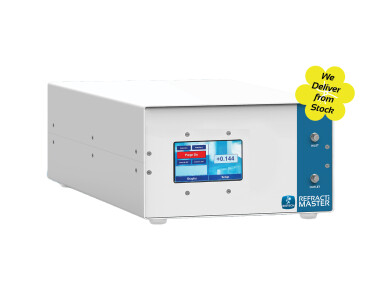Detectors
Are Our Tires Killing Fish? - Chromatography Investigates
Jan 15 2021
Each autumn, coho salmon return to their place of birth to spawn, so beginning the salmon life cycle all over again. But in the rivers and streams of the Pacific Northwest of the United States there is a problem. Coho salmon returned through the Puget Sound to the urban streams in the state of Washington, but over half of the salmon were dying before they could spawn.
Now researchers at the University of Washington Tacoma’s Center for Urban Waters think they have identified the cause of the salmon’s death. The research is published online in the research journal of the American Association for the Advancement of Science in a paper titled A ubiquitous tire rubber–derived chemical induces acute mortality in coho salmon. The work carried out by the scientists involved years of work and utilised chromatography in the search for the killer chemical.
Finding their way home
The life cycle of salmon is one of nature’s wonders. It begins when the eggs hatch far upstream in the fresh clean water of a river system. After a few months, the alevins have turned into fry when they begin to fill their swim bladders with oxygen and start feeding. After a year or more in their natal streams, the fry reacts to environmental cues and start the downstream migration that ends in the sea and ocean.
Depending on species, salmon spend between one ad eight years at sea before they begin the long journey back to their natal streams. After spawning and fertilisation, the male and female salmon die, before the cycle begins again. How they know where their natal streams are, nobody knows. But it is suspected that scents, chemical cues, and the sun play some role in the amazing natural journey back to their place of birth. But what was killing the salmon making this journey back to Washington each year?
Chromatography filters through the stormwater
When it rains, bits of aging tyres are flushed from the roads into streams. The team in Washington have found that the killer of the returning salmon is one of the chemicals that leach from the tyres into the freshwater streams and rivers. The researchers used chromatography to find that the killer is a molecule linked to a preservative added to tyres to stop them aging too quickly. Advances in the detection of synthetic macromolecules in chromatographic separations are discussed in the article, Expanding the Boundaries of Light Scattering for Macromolecules.
The team identified the compound toxic to salmon as 6PPD-quinone, which is formed when the tyre preservative 6PPD reacts with ozone. The team have identified the chemical is stormwater in other parts of the US too. ^PPD-quinone can be removed environmentally by treating the rainwater run-off, but this is an impractical solution. The researchers suggest that another option is to change the chemicals used for preserving tyre to make them ‘salmon safe’.
Events
Apr 22 2025 Kintex, South Korea
Analytica Anacon India & IndiaLabExpo
Apr 23 2025 Mumbai, India
Apr 27 2025 Portland, OR, USA
May 11 2025 Vienna, Austria
May 18 2025 Tempe. AZ, USA












